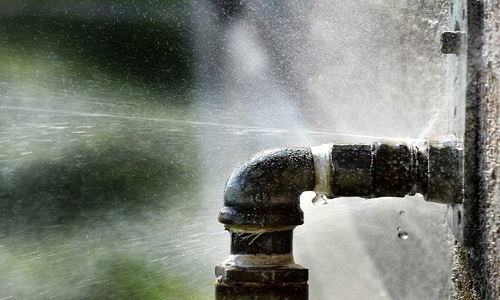Plastics that break down into particles as tiny as our DNA—small enough to be absorbed through our skin—are released into our environment at a rate of 82 million metric tons a year. These plastics, and the mix of chemicals they are made with, are now major contributors to disease, affecting the risk of afflictions ranging from cancer to hormonal issues.
Plastic pollution threatens everything from sea animals to human beings, a problem scientists, activists, business groups, and politicians are debating as they draft a global treaty to end plastic pollution. These negotiations have only highlighted the complexity of a threat that seems to pit economic growth and jobs against catastrophic damage to people and the planet.
Rapid growth in plastics didn’t begin until the 1950s, and since then, annual production has increased nearly 230-fold, according to two data sets processed by Our World in Data. More than 20 percent of plastic waste is mismanaged—ending up in our air, water, and soil.
Inescapable Problem
While plastic doesn’t biodegrade—at least not in a reasonable time frame—it does break down into ever smaller particles. We may no longer see it, but plastic constantly accumulates in our environment. These microscopic bits, known as microplastics and nanoplastics, can enter our bodies through what we eat, drink, and breathe.
Microplastics measure five millimeters or less. Nanoplastics are an invisible fraction of that size, down to one billionth of a meter or around the size of DNA.
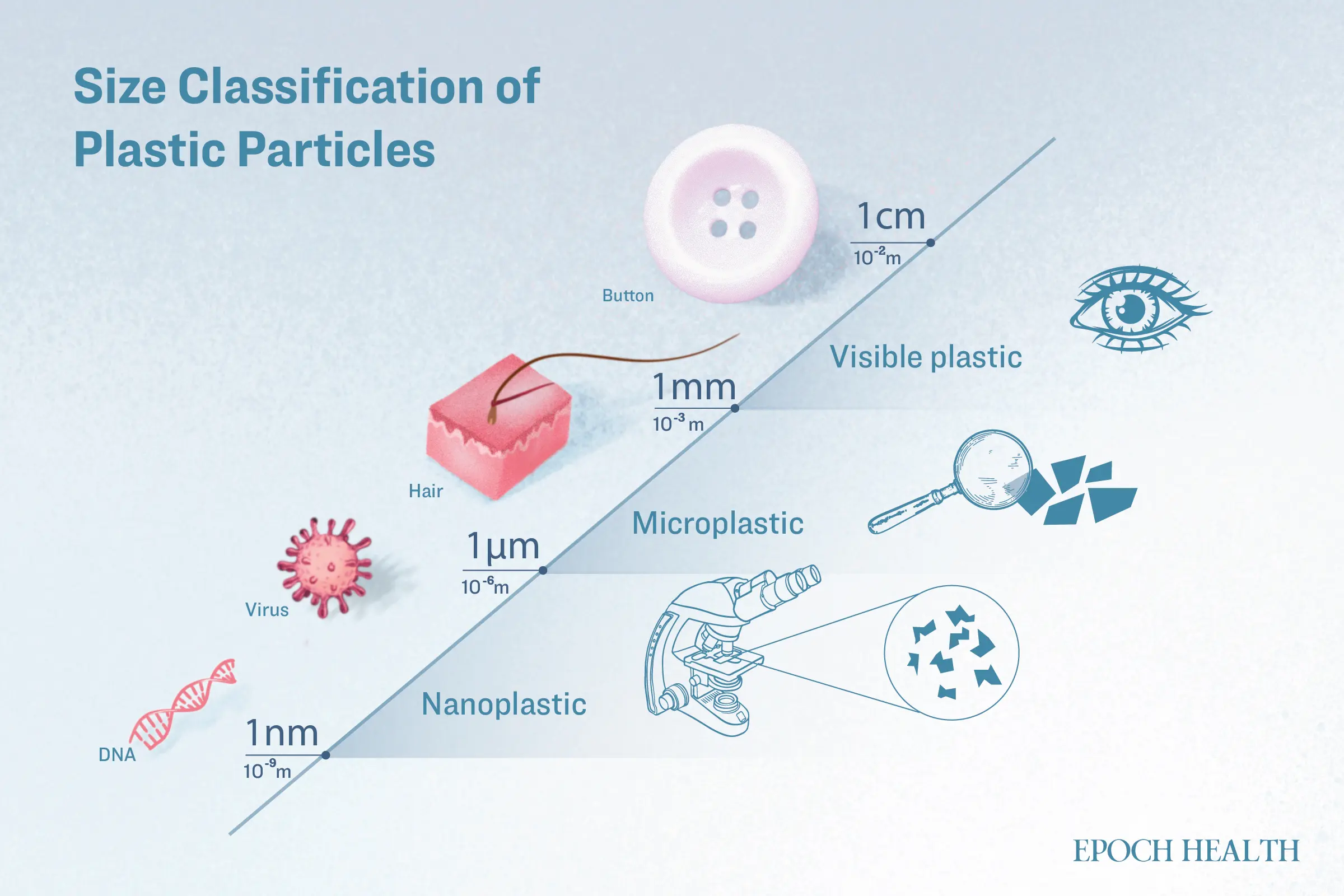
While microplastics can be as small as a hair, they remain visible. Nanoplastics, however, are impossible to see without a microscope. (Illustration by The Epoch Times, Shutterstock)
Plastic pollution is a chemical remnant of petroleum with other chemicals added in to change the durability, elasticity, and color. PlastChem Project has cataloged more than 16,000 chemicals—4,200 considered highly hazardous, according to the initiative’s report issued in March.
The astounding level and types of plastics, many with unknown health effects, should be a wakeup call for everyone, says Erin Smith, vice president and head of plastic waste and business at the World Wildlife Fund (WWF).
Premium Picks

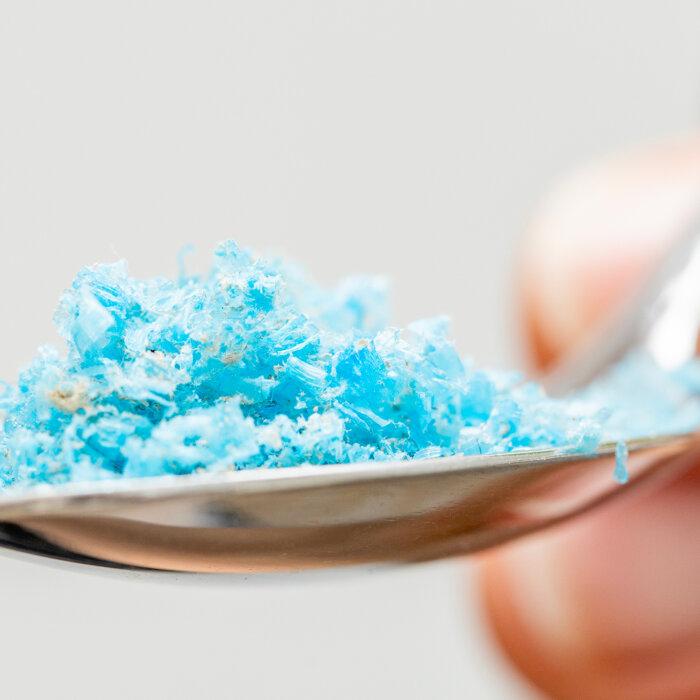
Micro- and Nanoplastics Linked to Parkinson’s and Dementia
“Plastic pollution is absolutely everywhere,” she said. “What’s hard right now is the body of science, trying to understand what the presence of plastic inside us means from a human health perspective, is still new.”
Ms. Smith said we may be waiting for the science to reveal the full scope of plastic’s biological effects, but one thing is certain: “We know it’s not good.”
Reproductive and Neurological Issues
Newer human health studies have shown plastic has far-reaching effects.
“The research is clear: Plastics cause disease, disability, and death. They cause premature birth, low birth weight, and stillbirth as well as leukemia, lymphoma, brain cancer, liver cancer, heart disease and stroke. Infants, children, pregnant women, and plastics workers are the people at greatest risk of these harms. These diseases result in annual economic costs of $1.2 trillion,” said Dr. Phil Landrigan, pediatrician and environmental health expert, in a Beyond Plastics news release in March.
Beyond Plastics, an advocacy group for policy change, warns that new research indicates plastic could be leading to an increased risk of heart disease, stroke, and death.
Successive studies have found microscopic plastic particles affect every system of our bodies and at every age.
Nearly 3,600 studies indexed by the Minderoo Foundation have detailed the effects of polymers and additives like plasticizers, flame retardants, bisphenols, and per- and polyfluoroalkyl substances. The vast majority of studies indicate plastics affect endocrine and metabolic function, the reproductive system, and contribute to mental, behavioral, and neurodevelopment issues.
One study published in Environmental Science & Technology looked at plastic food packaging from five countries and found hormone-disrupting chemicals were common.
“The prevalence of estrogenic compounds in plastics raises health concerns due to their potential to disrupt the endocrine system, which can, among others, result in developmental and reproductive issues, and an elevated risk of hormone-related cancers, such as breast and prostate cancer,” the authors noted.

Data mapped by Our World in Data shows national rates of per capita plastic pollution to the oceans. American individuals add about .01 kilograms (10 grams) of plastic waste to the world’s oceans each year. At 336,500,000 people today, that amounts to 3,311 tons or 7,418,555 pounds. (The Epoch Times)
The full scope of these chemical consequences is far from known. According to Minderoo, less than 30 percent of more than 1,500 plastics chemicals have been investigated for human health impacts. That includes the “substitution” chemicals used to replace additives that were restricted after being found problematic.
“All new plastic chemicals should be tested for safety before being introduced in consumer products, with ongoing post-introduction monitoring of their levels in human biospecimens and evaluation of health effects throughout the lives of individuals and across generations,” said professor Sarah Dunlop, Minderoo Foundation’s head of plastics and human health.
Absorbed Into Arteries and Skin
The relatively recent discovery that plastic particles can make their way into the human body through multiple methods has come with other unsetting insights. Microplastics and nanoplastics in human artery wall plaque were recently linked to a 350 percent increased risk of heart attack, stroke, and death.
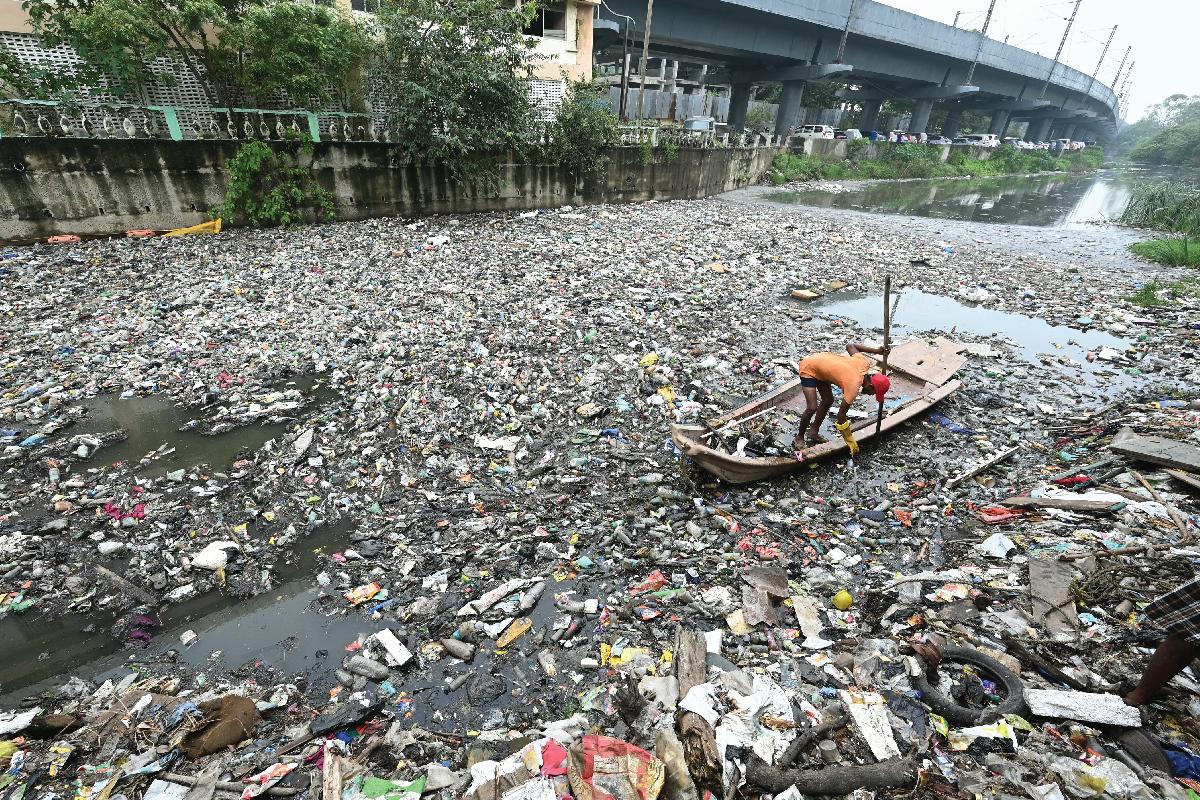
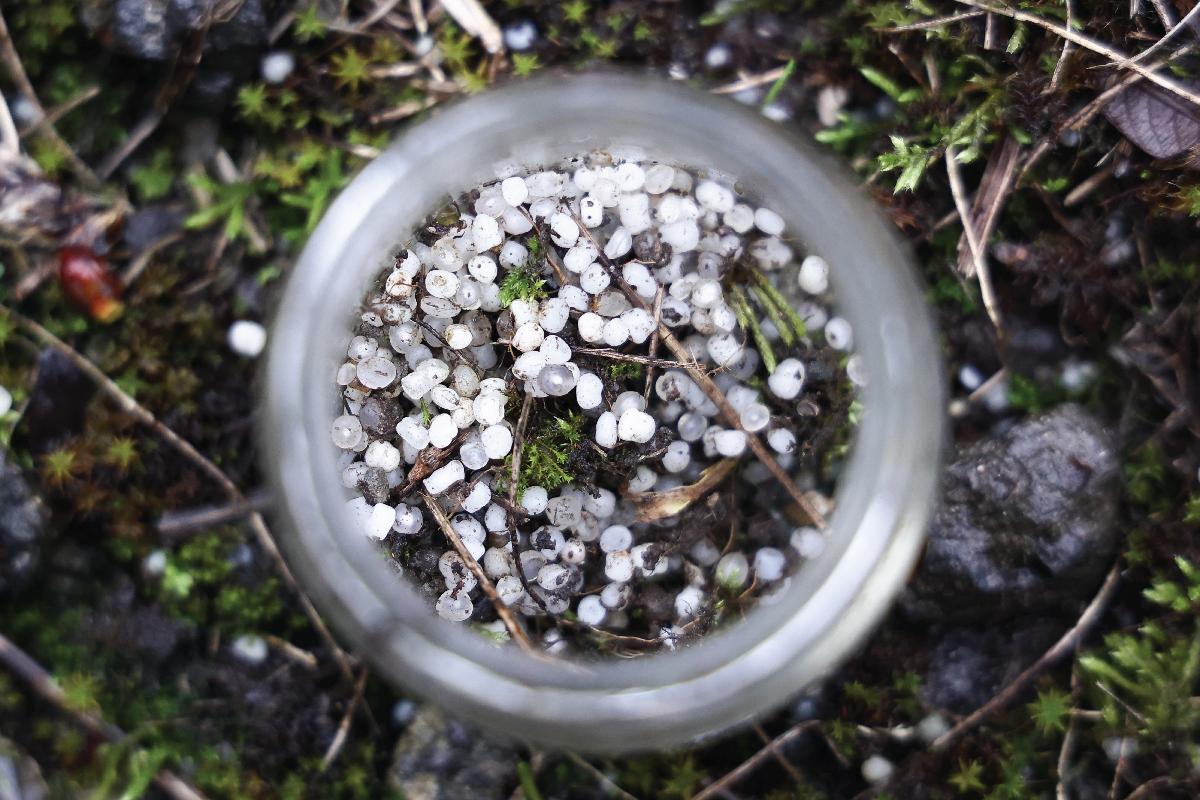
Plastic pollution comes in all forms, from packaging and waste that clogs the Buckingham Canal in Chennai, India to plastic pellets from petrochemical companies that litter the ground in Ecaussinnes, Belgium. (R. SATISH BABU, Kenzo TRIBOUILLARD / AFP via Getty Images)
Published March 6 in the New England Journal of Medicine, the study followed 257 patients over 34 months. Among those involved in the study, 58.4 percent had polyethylene in carotid artery plaque and 12.1 percent had polyvinyl chloride.
Polyethylene is the most common plastic found in bottles and bags, including cereal box liners. Polyvinyl chloride, better known as PVC, is another common plastic, often used in medical and construction materials.
Besides finding entry through ingestion, polymers can also make their way into the bloodstream through our skin, according to another study published in April in Environment International. The findings, based on a human skin equivalent model, add to evidence that suggests that as plastics break down, it may be impossible for us to avoid absorbing them. Microscopic plastic has been found in our soil, water supply, air, and arctic ice.
Sweaty skin was found to be especially prone to absorbing the particles.
Once inside the body, plastic can mimic hormones, collect in arteries, and contribute to one of the most common disease pathologies today—an imbalance of free radicals and antioxidants known as oxidative stress.
Dr. Bradley Bale, a heart attack and stroke prevention specialist and co-author of “Beat The Heart Attack Gene,” says there’s plenty of evidence that plastic is causing oxidative stress.
“Plastics are ubiquitous on planet Earth,” Dr. Bale said. “You’re crazy to think you can eliminate your exposure to that. It would be next to impossible. But we can look at other issues that cause oxidative stress.”

Data processed by our Our World in Data shows the increase in plastic production in metric tonnes. (Illustration by The Epoch Times, Shutterstock)
Those other issues, including poor diet and other toxic exposures, may be resolved through lifestyle approaches, supplements, or avoidance.
Dr. Bale suspects future nanoplastics research will reveal a relationship between plastics exposure and early death, dementia, cancer, diabetes, and any disease impacted by oxidative stress.
How to Stop the Plastic Onslaught
Since cleaning up plastic is nearly impossible once it breaks down, advocacy groups are pushing for legislation that would reduce single-use products such as food wrappers, bottles, takeout containers, and bags—some of the most prolific and problematic plastics.
The United Nations Environment Programme, a global environmental decision-making body with representatives from all UN member states, decided in March 2022 that the plastics issue needed a coordinated response. It committed to fast-tracking a treaty meant to address the world’s growing plastic problem.
However, after holding the fourth of five sessions in late April in Canada, the group still hasn’t decided whether to identify problematic plastics or call for new plastic to be phased out or scaled back. The final meeting begins in late November with a treaty expected in 2025.
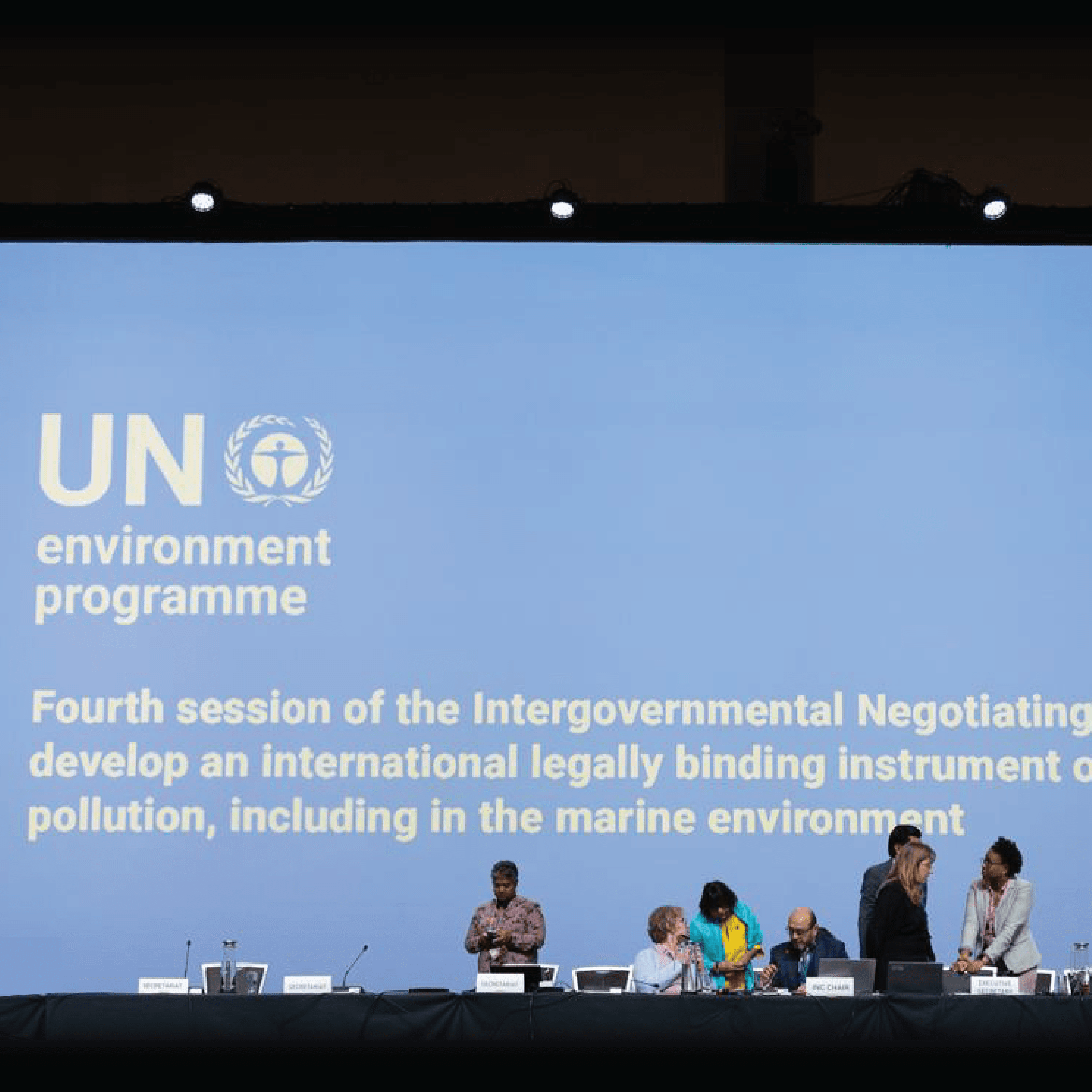


(Left) The secretariat of the Intergovernmental Negotiating Committee (INC) to Develop an International Legally Binding Instrument on Plastic Pollution consults on the dais during the closing plenary in Ottawa on April 30, 2024; (Center) Members of Greenpeace holds up placards during the discussions in Ottawa, Canada, on April 23, 2024.; (Right) Pro-plastic messaging was seen at hotels in Ottawa during the UN INC meetings. (IISD-ENB/Kiara Worth, DAVE CHAN/AFP via Getty Images)
Meanwhile, U.S. lawmakers are on a third attempt to gain Congressional consideration of the Break Free From Plastic Pollution Act. First introduced in 2020, it remains stuck in committee. Among the act’s proposals are reducing and banning some single-use plastics, creating grants for reusable and refillable products, requiring corporations to take responsibility for plastic pollution, and temporarily banning new plastic facilities until protections are established.
The Economics of Plastics
Plastics are important for many businesses and the plastics industry itself is significant and influential. However, plastics aren’t as profitable as one may expect. New plastic facilities often get subsidies and tax breaks that make plastics artificially cheap to produce. These financial supports have increased substantially in the past three years.
In addition to direct fossil fuel subsidies, the plastics and petrochemical industries benefit from grants, tax breaks, and incentives. Because of a lack of transparency, exact figures on subsidies are hard to come by, according to the Center for International Environmental Law. The group is urging the UN to ban certain subsidies, including any that would reduce the price of raw goods used to make plastic.
Some organizations question whether these incentives are beneficial to local economies and taxpayers as a whole.
The Environmental Integrity Project issued a report in March that found 64 percent of 50 plastic plants built or expanded in the United States since 2012 received nearly $9 billion in state and local subsidies. Unexpected events were common, including violations of air pollution permits among 42 plants and more than 1,200 accidents like fires and explosions. State-modified permits at 15 plants allowed for additional emissions that were often detected beyond the property line of the plants.
A case study report published June 2023 by the Ohio River Valley Institute examined the $6 billion Shell facility built in Beaver County, Pennsylvania to produce plastic pellets.
“Since the project’s inception, industry executives and government officials alike have argued that it would spur local economic growth and renewed business investment. Yet prosperity still has not arrived. Beaver County has seen a declining population, zero growth in GDP, zero growth in jobs, lackluster progress in reducing poverty, and zero growth in businesses—even when factoring in all the temporary construction workers at the site,” the report says.

The Shell Pennsylvania Petrochemicals Complex makes plastic from “cracking” natural gas in Beaver County, near Pittsburgh, PA. (Mark Dixon/Flickr)
Conflicted Solutions for a Plastic World
The Plastics Industry Association argues that plastic “makes the world a better place”—language it wants in the plastics treaty.
The association represents more than one million workers throughout the entire supply chain. A $468 billion industry, plastics are the sixth largest U.S. manufacturer, according to the association, which did not respond to media requests for an interview.
David Zaruk, a communications professor in Belgium with a doctorate in philosophy, said opposition to plastic is largely an attack on the fossil fuel industry—part of a larger “anti-capitalist political agenda.” The value of plastic on society, he said, is frequently understated.
He pointed to a 2024 study published in Environmental Science and Technology that concludes plastic is far more “sustainable” with lower greenhouse gas emissions than alternatives like paper, glass, and aluminum—many of which it was designed to replace. Arguments often overlook the environmental impact of alternatives, the study notes, and in some cases, there are no substitutions for plastic.
“This isn’t a recent revelation either. Academic scientists have said for years that plastic serves essential functions. Speaking specifically of short-lived plastic uses, a pair of supply chain experts argued in 2019 that ’some plastic packaging is necessary to prevent food waste and protect the environment.’ By the way, food waste produces roughly double the greenhouse emissions of plastic production,” Mr. Zaruk wrote recently on the Substack blog, Firebreak.
The Plastics Industry Association heavily promotes recycling and biodegradable plastics but critics say there are inherent problems with both.
Only 4 percent of plastic is recycled in the United States, while an equal amount ends up in rivers, oceans, and soil—breaking down into microplastics and nanoplastics that experts believe will persist for centuries.
The U.S. Plastics Pact—a collaboration of more than 100 businesses, nonprofit organizations, government agencies, and academic institutions initiated by The Recycling Partnership and World Wildlife Fund—identified 11 problematic plastics that its members aim to voluntarily eliminate by 2025. Members include major plastics users and the products are all finished items or components of plastics that either aren’t recycled or cause problems in the recycling system and could be eliminated or replaced.
While some major companies support the pact, the Plastics Industry Association has taken a dim view of the pact, describing it as an attempt to “tell others how to run their businesses by restricting their choices.”
The association says the best way to increase recycling is through education and innovation.
Recycled Mystery Chemicals
Unfortunately, recycling isn’t a perfect solution to the plastic problem. Recycled plastics present additional hazards because they are made from a blend of products and a more uncertain chemical makeup, according to Therese Karlsson, science advisor for the International Pollutants Elimination Network, a global consortium of public interest groups.

“We’ve looked a lot at recycled plastics. There you have a lot of different plastic materials that you don’t know what they contain and you combine that into a new plastic material that you have even less information about what it contains,” Ms. Karlsson. “As a consumer, you can’t look at a piece of plastic to figure out if it’s safe or not. We just don’t know, but we know a lot of the chemicals used in plastic are toxic.”
An IPEN investigation in April found plastic pellets recovered from recycling facilities in 24 countries had hundreds of toxic chemicals—including pesticides, industrial chemicals, pharmaceuticals, dyes, and fragrances.
“For our recycling technology, it just doesn’t work, and a lot of that ends up in landfills anyway,” said Ms. Smith from the WWF. “It shouldn’t require a decoder ring to decide what goes in that blue bin because everything should be designed for that system.” For the Silo, Amy Denny.
Little Changes Make a Big Difference
In the absence of government intervention, Ms. Smith said there are some easy tips consumers can take to limit their own plastic exposure:
- Shop with reusable shopping bags.
- Don’t use plastic in the microwave or dishwasher because heat can release additional polymers.
- Buy metal or glass snack containers to replace sealable plastic bags.
- Use beeswax cloth in place of plastic wrap.
- Replace dryer sheets with wool balls.
- Carry a refillable cup for water and coffee.
- Consider reusable trash bags.
- Use and carry metal straws, stir sticks, and/or reusable cutlery.
- Don’t litter, and pick up trash you find outdoors.


